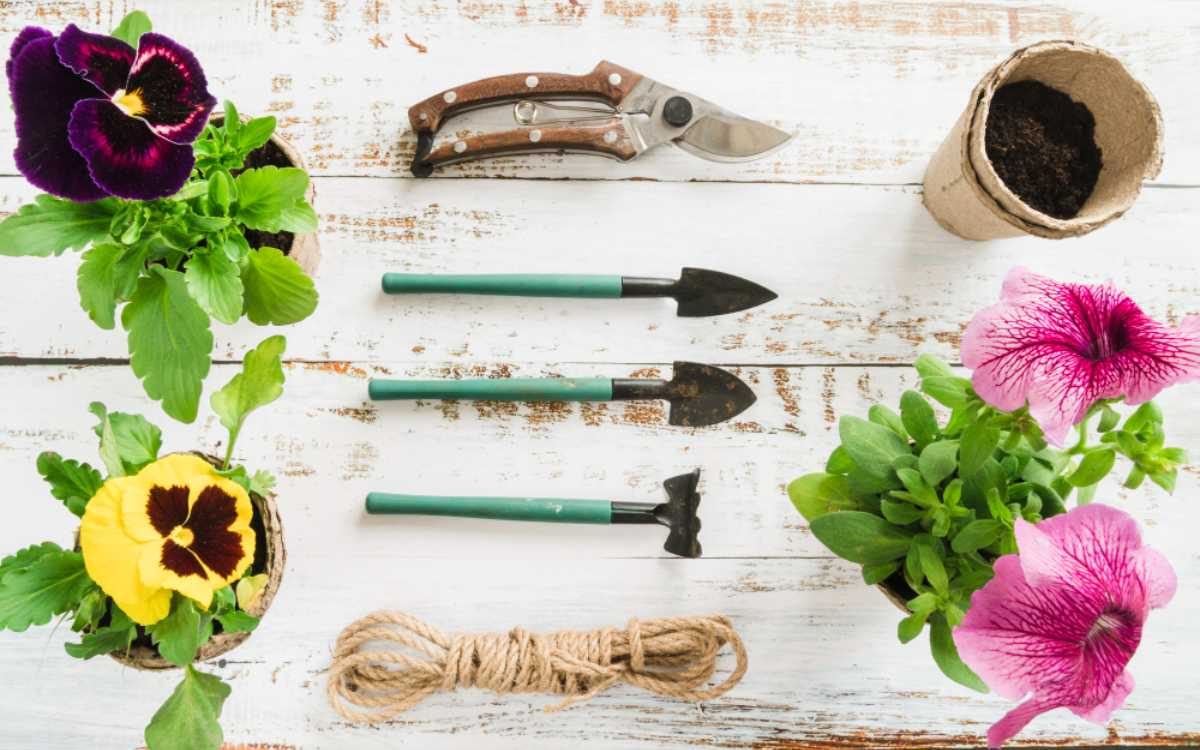Embarking on a gardening journey can be both exciting and rewarding. Whether you’re planning to cultivate a lush vegetable garden or a vibrant flower bed, having the right tools is essential. This guide introduces you to the must-have gardening tools that will make your gardening experience more efficient and enjoyable. Each tool plays a crucial role in ensuring your garden thrives.
Contents
1. Hand Trowel
Versatile and Essential: A hand trowel is indispensable for any gardener. This small, handheld tool is perfect for planting, transplanting, and weeding. Its pointed blade allows you to dig small holes for seedlings and bulbs with ease. Look for a trowel with a comfortable grip and a sturdy, rust-resistant blade to ensure longevity.
2. Pruning Shears
Precision Cutting: Pruning shears, also known as secateurs, are vital for maintaining the health and appearance of your plants. They are used for trimming and shaping shrubs, cutting back perennials, and removing dead or damaged foliage. Choose high-quality, sharp shears with a comfortable handle to make clean cuts without damaging the plants.
3. Garden Fork
Soil Aeration and Digging: A garden fork is essential for breaking up and turning over soil. Its strong, pointed tines penetrate hard ground more effectively than a spade, making it ideal for loosening compacted soil and incorporating organic matter. A garden fork can also be used to lift and divide perennials.
4. Watering Can
Controlled Hydration: A watering can is crucial for providing your plants with the water they need, especially in areas not reached by a garden hose. Look for a can with a detachable rose to control the water flow, ensuring gentle watering for delicate seedlings and more robust hydration for larger plants.
5. Spade
Digging and Edging: A spade is a versatile tool used for digging, edging, and lifting soil. Its flat, rectangular blade is perfect for creating clean edges along garden beds and pathways. A durable spade with a comfortable handle will make digging tasks more manageable and efficient.
6. Garden Hoe
Weed Control: A garden hoe is indispensable for keeping weeds at bay. This tool is used to loosen the top layer of soil and cut down weeds before they can take root. There are various types of hoes, such as the draw hoe and the stirrup hoe, each designed for specific weeding tasks. Choose one that suits your gardening needs.
7. Rake
Soil Preparation and Cleanup: A rake is essential for preparing the soil and cleaning up debris. There are two main types: the garden rake and the leaf rake. A garden rake, with its sturdy tines, is used for breaking up soil and leveling it before planting. A leaf rake, with its flexible tines, is ideal for gathering leaves and other lightweight debris.
8. Wheelbarrow
Heavy Lifting: A wheelbarrow is invaluable for transporting soil, compost, plants, and other materials around your garden. It reduces the physical strain of carrying heavy loads and speeds up the process of moving materials. Choose a wheelbarrow with a sturdy frame and a comfortable grip for ease of use.
9. Garden Gloves
Hand Protection: Garden gloves are essential for protecting your hands from thorns, splinters, and dirt. They also provide a better grip on tools and materials. Look for gloves that are durable, flexible, and breathable to ensure comfort during extended gardening sessions.
10. Hose with Adjustable Nozzle
Efficient Watering: A hose with an adjustable nozzle allows for efficient watering of your garden. The adjustable nozzle lets you control the water flow and pressure, providing the right amount of water for different plants. A hose reel can also be helpful for easy storage and to prevent kinks.
11. Garden Kneeler
Comfort and Support: A garden kneeler provides comfort and support while working at ground level. It can reduce strain on your knees and back, making it easier to plant, weed, and perform other tasks. Many kneelers also double as seats, offering versatility and added convenience.
12. Soil Tester
Understanding Your Soil: A soil tester helps you understand the pH and nutrient levels of your garden soil. This information is crucial for selecting the right plants and amending the soil as needed. Regular testing ensures that your plants receive the optimal growing conditions.
13. Plant Labels
Organization and Tracking: Plant labels are useful for keeping track of the different plants in your garden. They help you remember what you’ve planted and where, which is especially helpful for identifying seedlings and bulbs. Durable, weather-resistant labels will ensure the information remains legible throughout the growing season.
14. Garden Twine
Plant Support: Garden twine is handy for supporting climbing plants, tying stems to stakes, and bundling plants together. It is also useful for marking rows and creating plant supports. Biodegradable twine is an eco-friendly option that decomposes over time.
15. Garden Scissors
Precision Tasks: Garden scissors are essential for precision tasks such as deadheading flowers, snipping herbs, and harvesting vegetables. They are smaller and more delicate than pruning shears, making them ideal for detailed work. Look for sharp, stainless steel blades and ergonomic handles for comfort.
Conclusion:
Equipping yourself with these essential gardening tools will set you on the path to successful gardening. Each tool plays a vital role in different gardening tasks, from planting and pruning to watering and weeding. By investing in high-quality tools, you’ll ensure that your gardening experience is efficient, enjoyable, and fruitful. Happy gardening!






